The 1st ICRC Conference on Weapon-Wounded Care took place in Geneva on December 17 and 18, 2024. The ICRC Library was there – or rather, books from our “Ancien Fonds”, a heritage collection assembled between the foundation of the ICRC in 1863 and the onset of World War I. In the main hall, participants could see a selection of manuals, reports, and studies on care for the war wounded, spanning the mid-19th to the early 20th century. Published across the Americas, Europe and the Ottoman Empire, these books are part of the history of modern wartime medicine and surgery. They present key innovations, from the introduction of anaesthesia and X-rays to better stretchers for transporting injured combatants. They are also a testament to the ICRC’s longstanding work to improve treatment for the war wounded – providing care, protecting caregivers, and supporting medical innovations.
For more information about the collection, you will find a bit more reading here. You can contact the library team at library@icrc.org and are most welcome to come and see the books for yourself in the ICRC Library in Geneva. A digitized selection is available to browse here.
Le chirurgien à l’ambulance ou quelques études pratiques sur les plaies par armes à feu. Suivi de lettres à un collègue sur les blessés de Palestro, Magenta, Marignan et Solférino / Louis Appia (Switzerland, 1859) – AF 3017
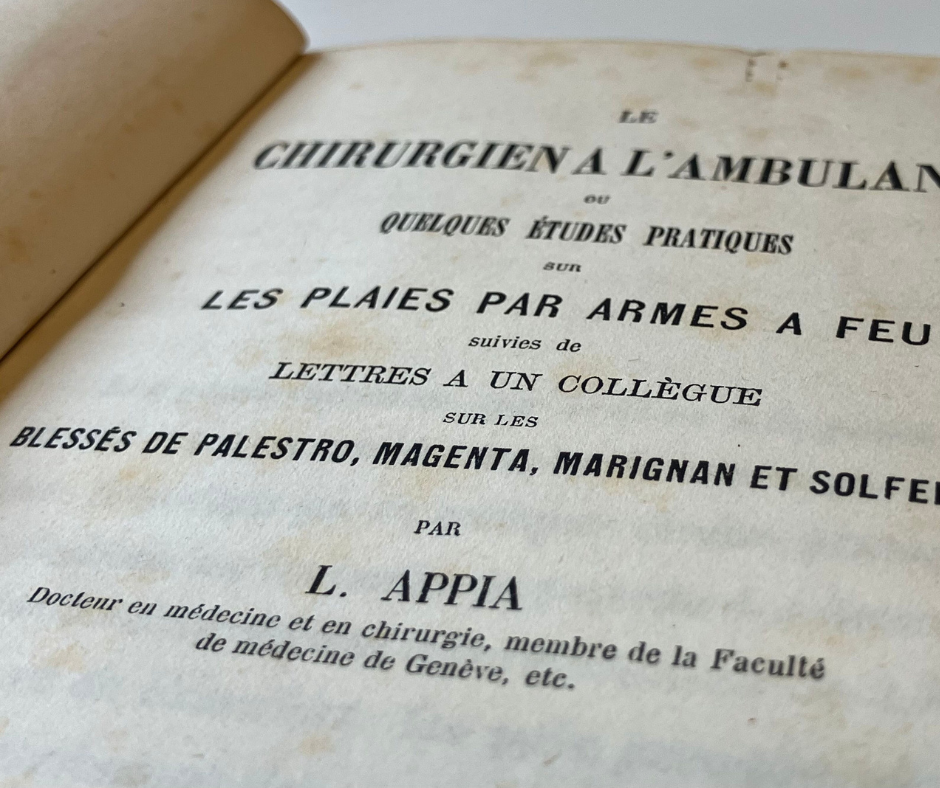 Swiss surgeon Louis Appia (1818-1898) first treated the war wounded in Paris and Frankfurt during the 1848 revolutions in France and Germany. His interest in military medicine led him to invent an instrument for immobilizing fractured limbs during transport. Working in field hospitals in Turin, Milan, Brescia and Desenzano del Garda during the Austro-Sardinian War in 1859, he put his invention to good use.
Swiss surgeon Louis Appia (1818-1898) first treated the war wounded in Paris and Frankfurt during the 1848 revolutions in France and Germany. His interest in military medicine led him to invent an instrument for immobilizing fractured limbs during transport. Working in field hospitals in Turin, Milan, Brescia and Desenzano del Garda during the Austro-Sardinian War in 1859, he put his invention to good use.
That same year, back in Geneva, he published his most well-known treatise “Le chirurgien à l’ambulance ou quelques études pratiques sur les plaies par armes à feu” (“The ambulance surgeon, or practical observations on gunshot wounds”) with the help of fellow doctor Théodore Maunoir.
Alongside the better-known Henry Dunant, Gustave Moynier and Guillaume Henri Dufour, both men would later become founding members of the “International Committee for Relief to Wounded Soldiers”, soon renamed the “International Committee of the Red Cross” (ICRC). You can read the English language 1862 edition of Appia’s treatise online, courtesy of the Harvey Cushing/John Hay Whitney Medical Library at Yale University.
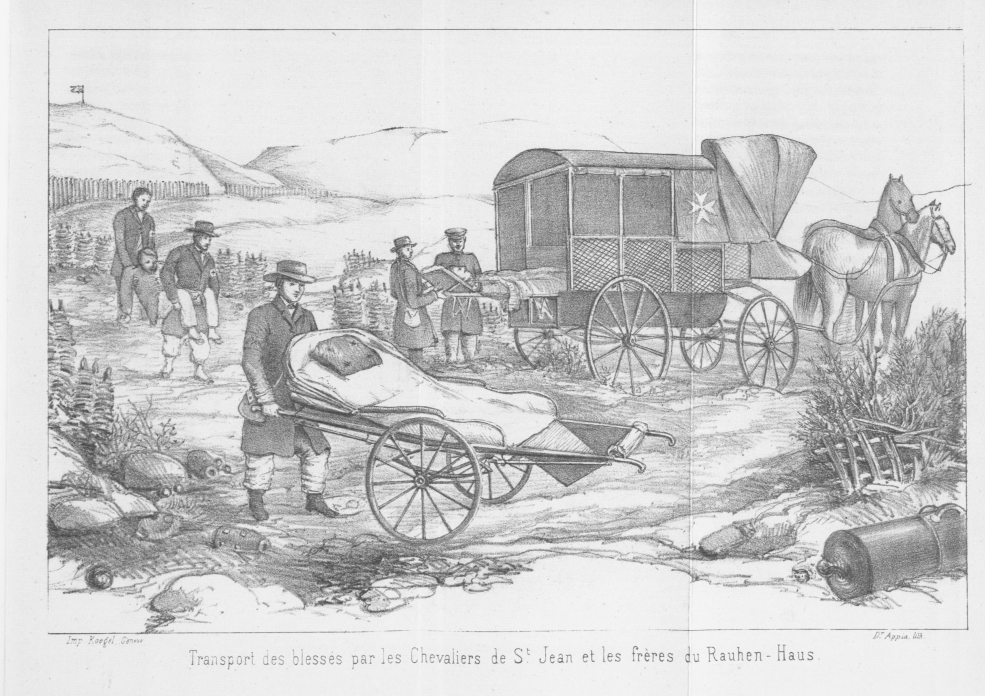

Friederich von Esmarch (1823-1908) served as a military surgeon in the Prussian Army during the Danish-Prussian War (1864), Austro-Prussian War (1866), and Franco-Prussian War (1870-1871).
A pioneer of first aid training, he is also well known for popularizing the use of a triangular bandage on the battlefield. A simple piece of cloth cut into a triangle, the Esmarch Bandage could be carried and used by any soldier, with no special training, to dress a wound, as a sling or as a splint. Made of soft rubber, a modern version of the Esmarch Bandage lives on, though it has largely been replaced by modern tourniquets for hemorrhage control.
Tucked away in a small publication, this illustrated bandage is the only item in the ICRC Library’s collection printed on cloth rather than paper. Its detailed illustrations show the bandage’s versatility.
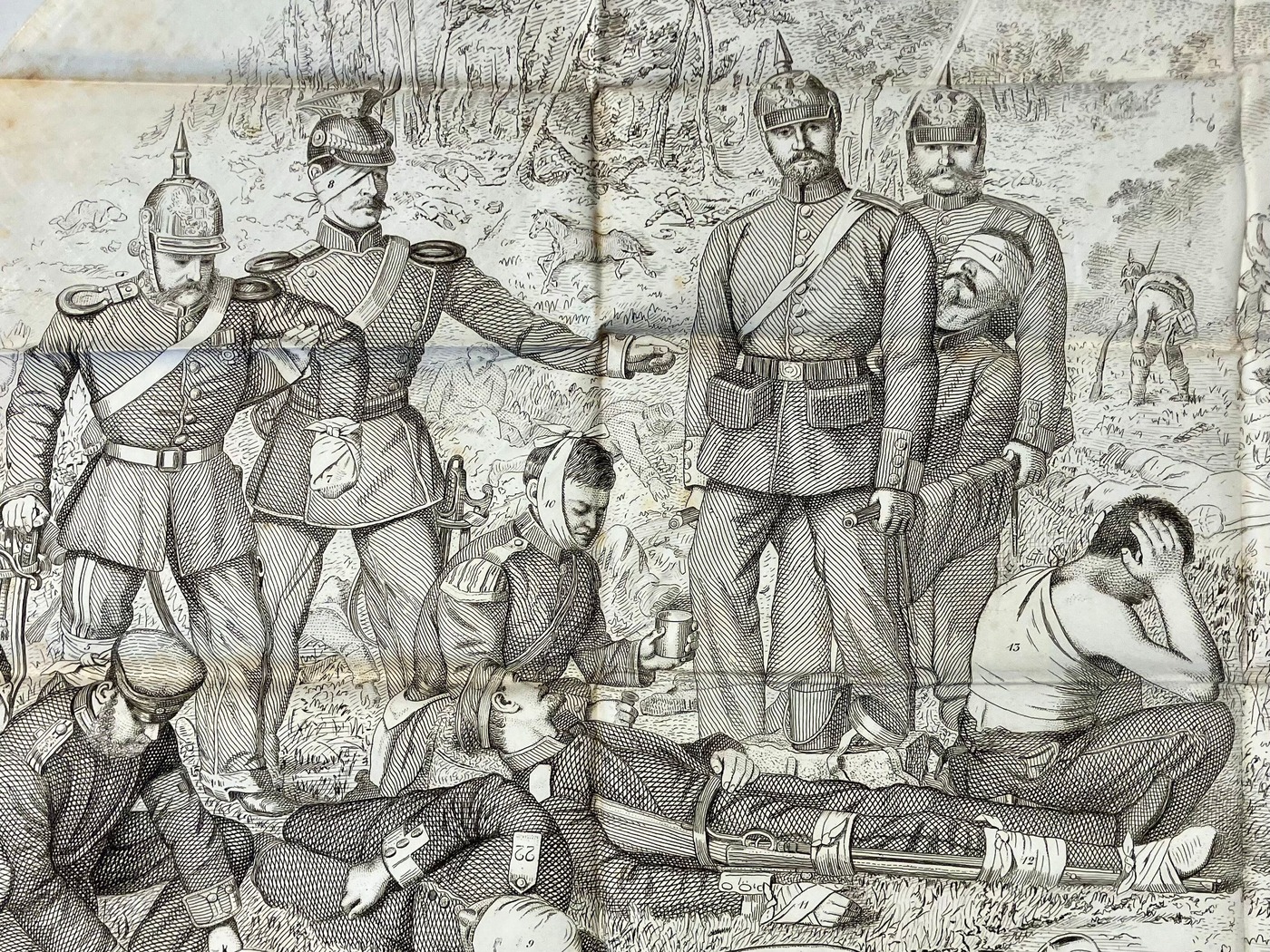
Brancard à roues de Mooij : planches et description manuscrite / C. de Mooij (The Netherlands, 1880) – AF 2412-2414
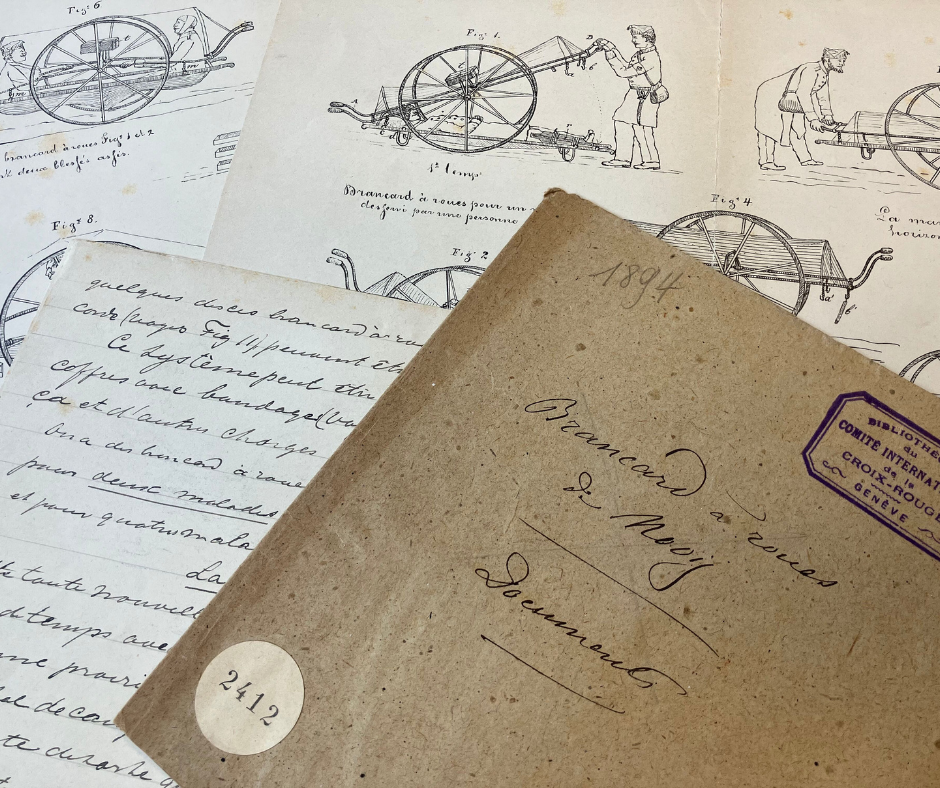
These illustrations show the design and functionality of a wheeled stretcher, invented by Dutch medical officer C. de Mooij, to improve the transport of wounded soldiers.
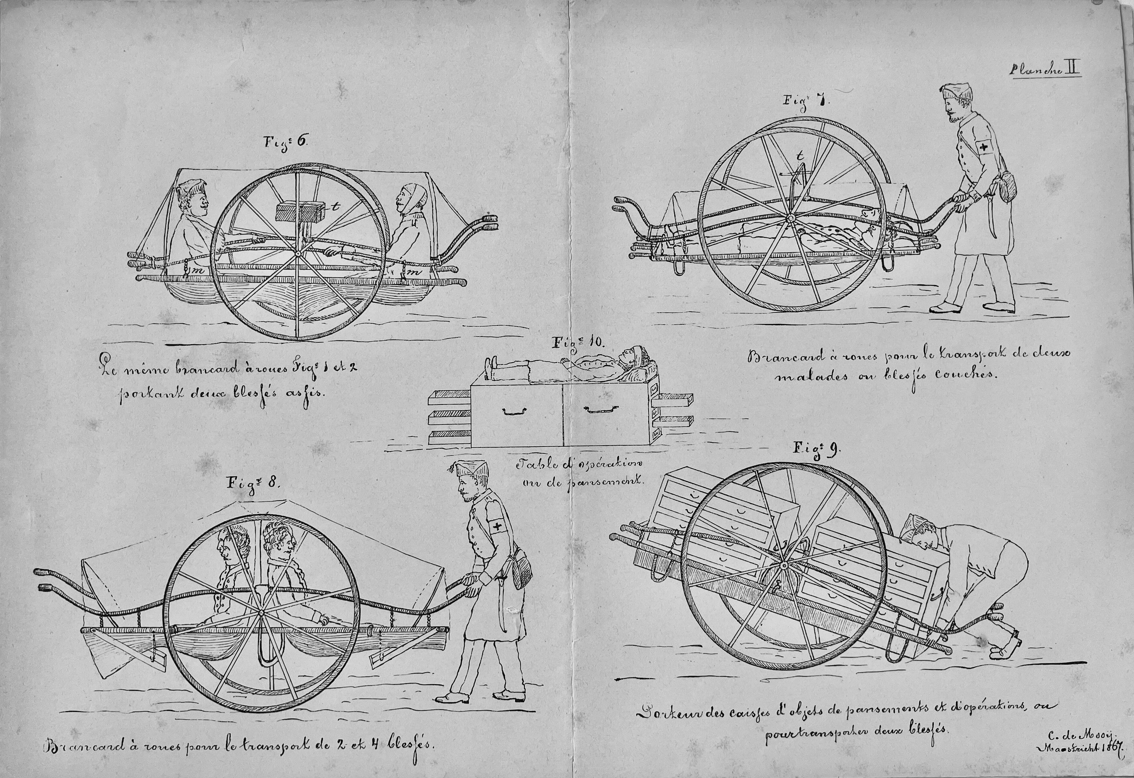
Zeichnungen und Beschreibungen der verschiedenen Gegenstände der materiellen Ausrüstung im Fache des Gesundheitsdienstes bei den Truppencorps der eidgenössischen Armee / Truppencorps der eidgenössischen Armee (Switzerland, 1842) – AF 4273

This publication provides descriptions and illustrations of Swiss Army medical equipment. It showcases the development and standardization of military medical supplies during the mid-19th century. Published in 1842, it is also one of the oldest books in the ICRC Library’s collections.
Kriegschirurgische Erfahrungen aus dem Südafrikanischen Kriege 1899-1900 / H. Küttner (Germany, 1900) – AF 2775
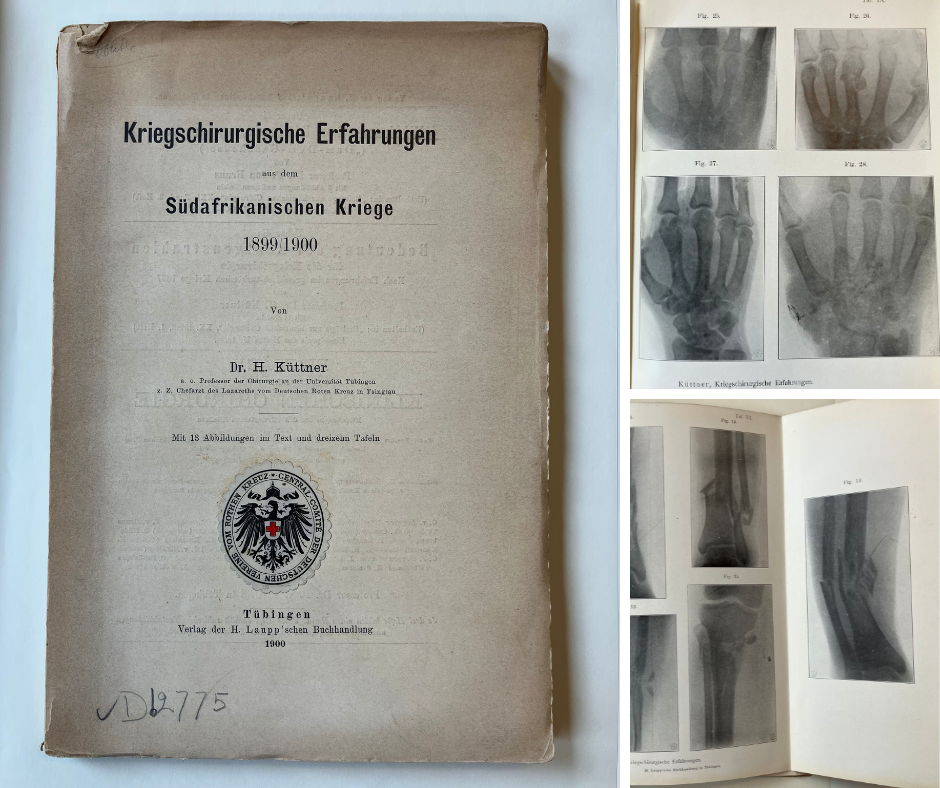
This book documents surgical experiences from the Second Boer War (1899–1902). It includes photographs of X-rays, just five years after their discovery by German physicist Wilhelm Conrad Roentgen.
Memoranda relating to the discovery of surgical anaesthesia / William James Morton (United States, 1905) – AF 1509
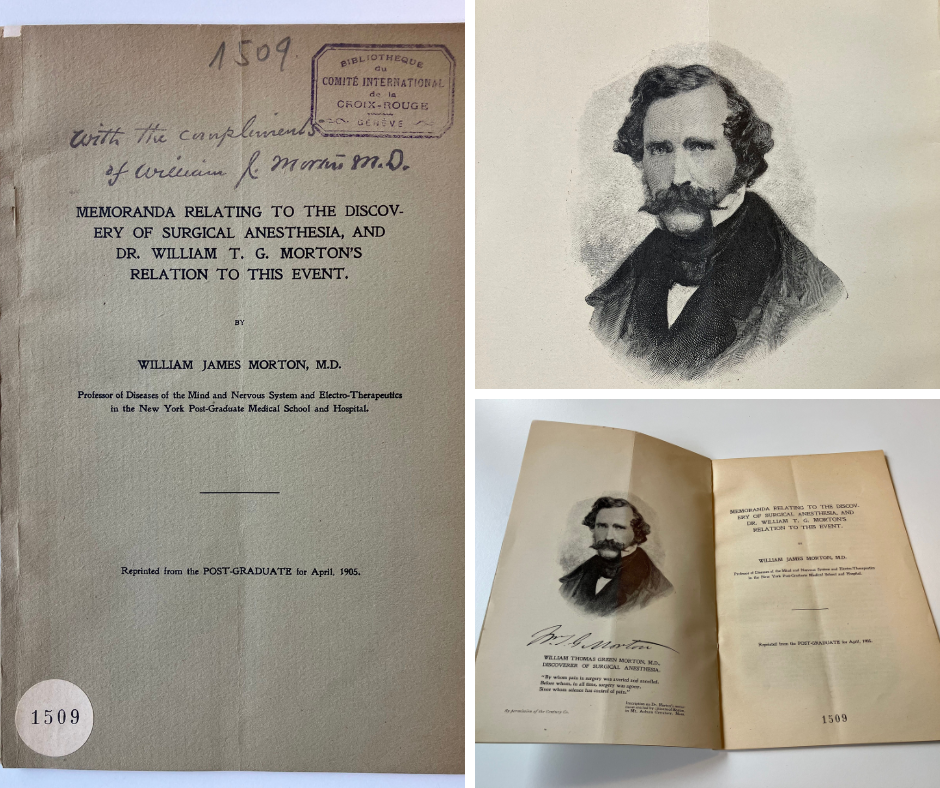
William James Morton (1845-1920) was a US physician, specializing in electrotherapeutics. His father, William Thomas Green Morton (1819-1868), was a dentist and physician who first publicly demonstrated the use of inhaled ether as a surgical anaesthetic in 1846, earning him recognition as the “inventor” of anaesthesia. However, his work was preceded by that of Georgia surgeon Crawford Williamson Long, who had successfully used ether earlier. The catch? Long didn’t publish his findings until 1849, sparking quite a feud over who truly deserved credit for one of medicine’s greatest breakthroughs.
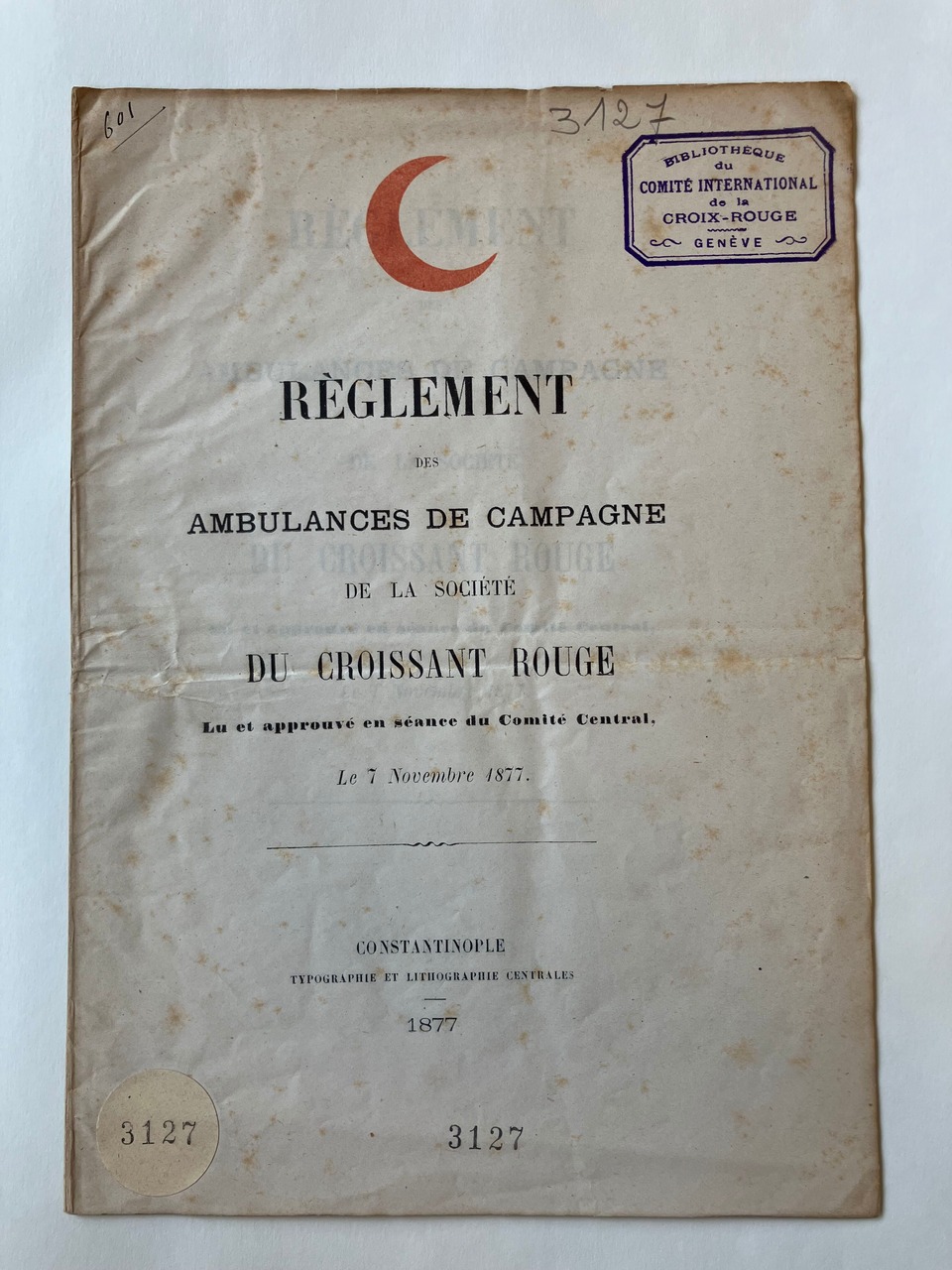 Règlement des ambulances de campagne de la société du Croissant-Rouge / Société du Croissant-Rouge Ottoman (Ottoman Empire, 1877) – AF 3127
Règlement des ambulances de campagne de la société du Croissant-Rouge / Société du Croissant-Rouge Ottoman (Ottoman Empire, 1877) – AF 3127
This document outlines the regulations for field hospitals of the Ottoman Red Crescent Society (now the Turkish Red Crescent Society), founded in 1868. The Ottoman Empire, a signatory to the 1864 Geneva Convention, announced during the Russo-Turkish War (1875-1878) that it would use a red crescent instead of a red cross.
Cirugía de la guerra / Eduardo Moore (Chile, 1897) – AF 1328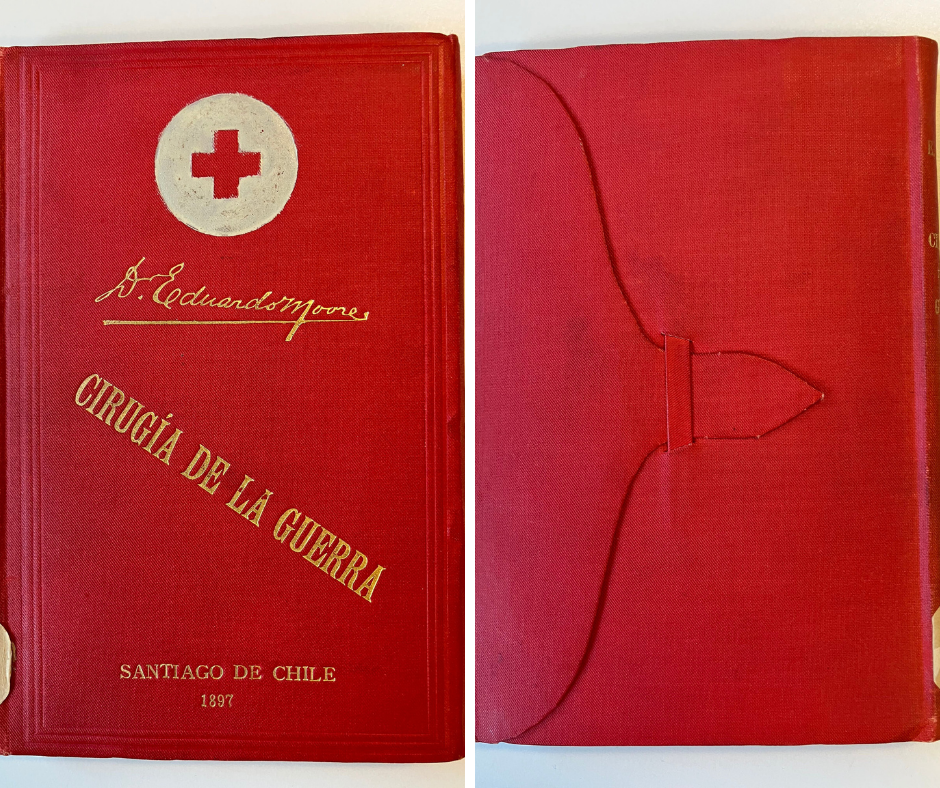
A pocket-sized manual, easy to transport, that covers how to treat gunshot wounds and how to organize military sanitary services. A digitized copy is available on the Chilean National Library’s platform Memoria Chilena.
The author, Eduardo Moore Bravo de Naveda (1865-1941), was a Chilean physician, anthropologist, and botanist. He was also a founding member of the Chilean Red Cross.
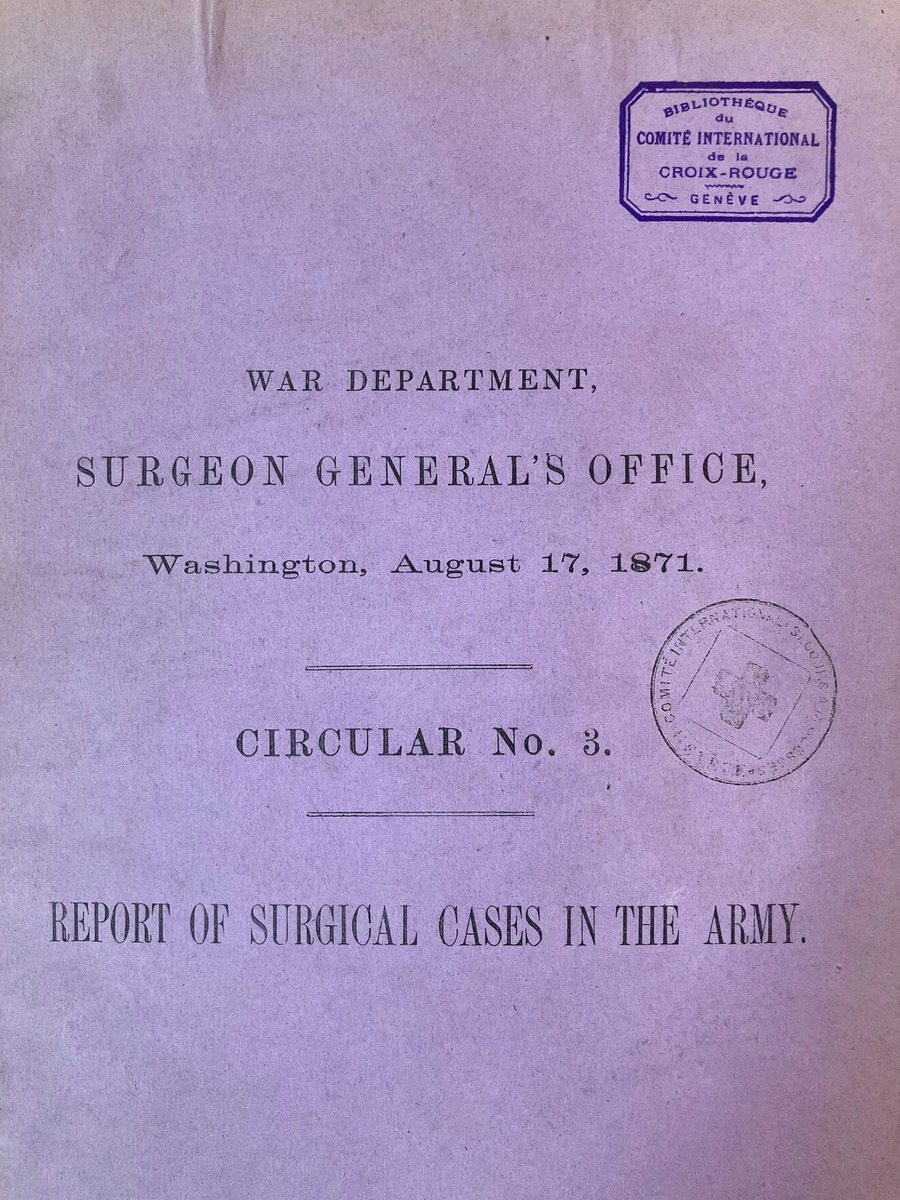 Report of surgical cases treated in the Army of the United States / George Otis; War Department, Surgeon General’s Office (United States, 1871) – AF 236
Report of surgical cases treated in the Army of the United States / George Otis; War Department, Surgeon General’s Office (United States, 1871) – AF 236
A collection of surgical case studies from the U.S. Army, compiled by George Alexander Otis (1830-1881) for the Surgeon General’s Office. This report reflects the growing emphasis on systematic data collection and analysis to improve surgical techniques and outcomes for patients in the mid- to late nineteenth century.
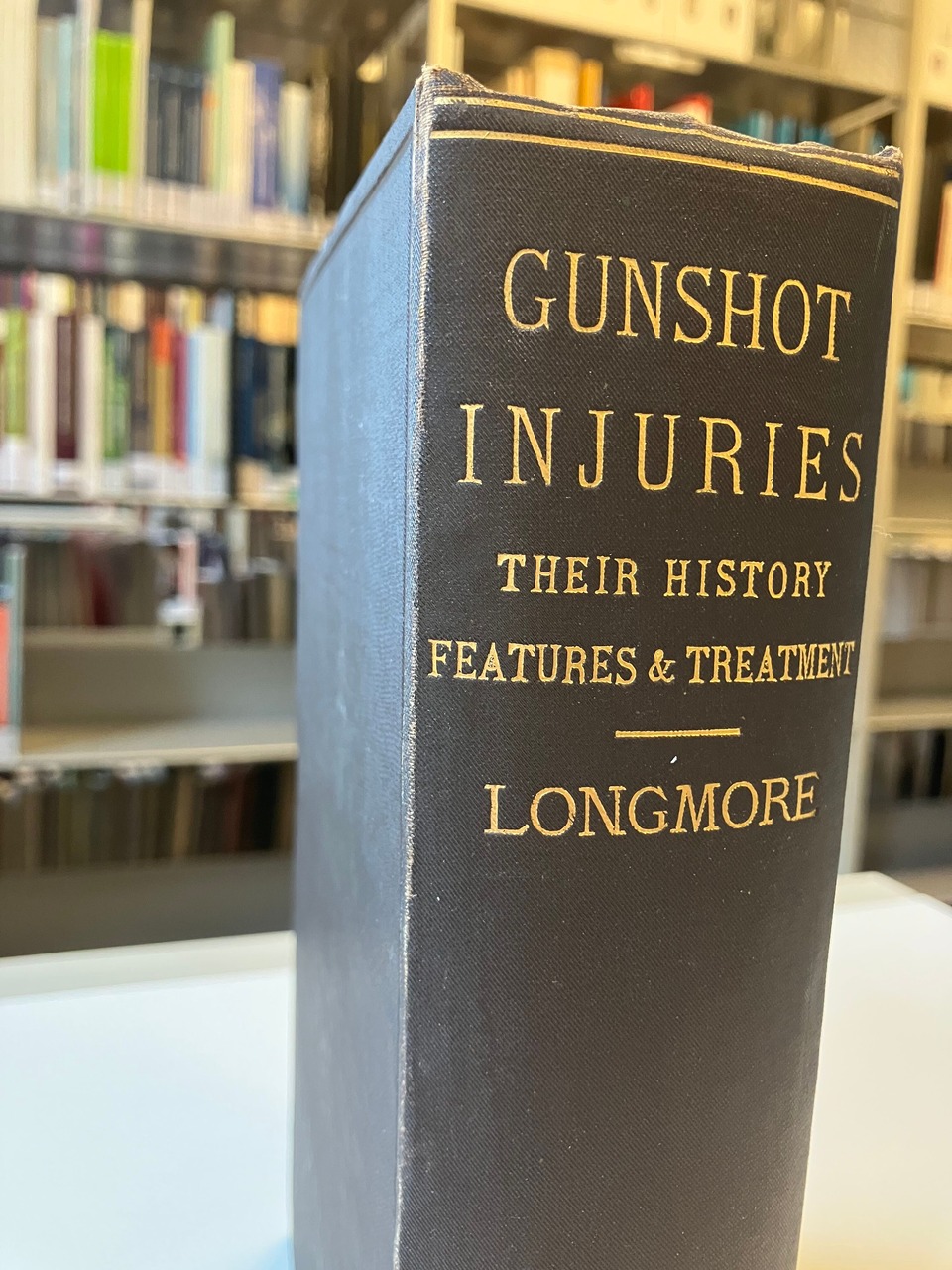
Gunshot injuries: their history, characteristic features, complications and general treatment / Thomas Longmore (United Kingdom, 1877) – AF 2016
Sir Thomas Longmore (1816–1895), Surgeon-General of the British Army and professor of military surgery at the Army Medical School at Netley Hospital, published a detailed study of gunshot wounds, their treatment, and associated complications. A veteran of the Crimean War, Longmore also attended the Diplomatic Conference that adopted the first Geneva Convention in 1864.


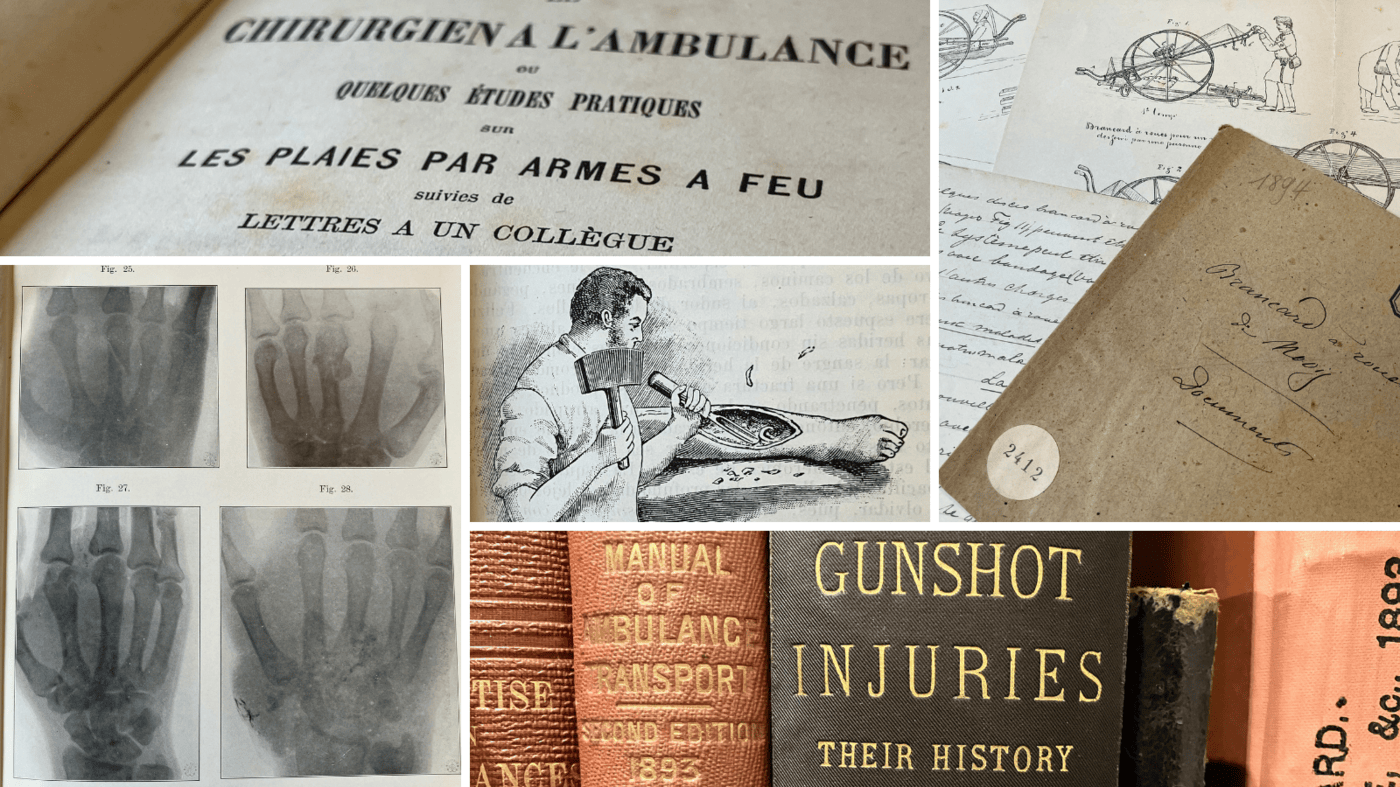
Comments